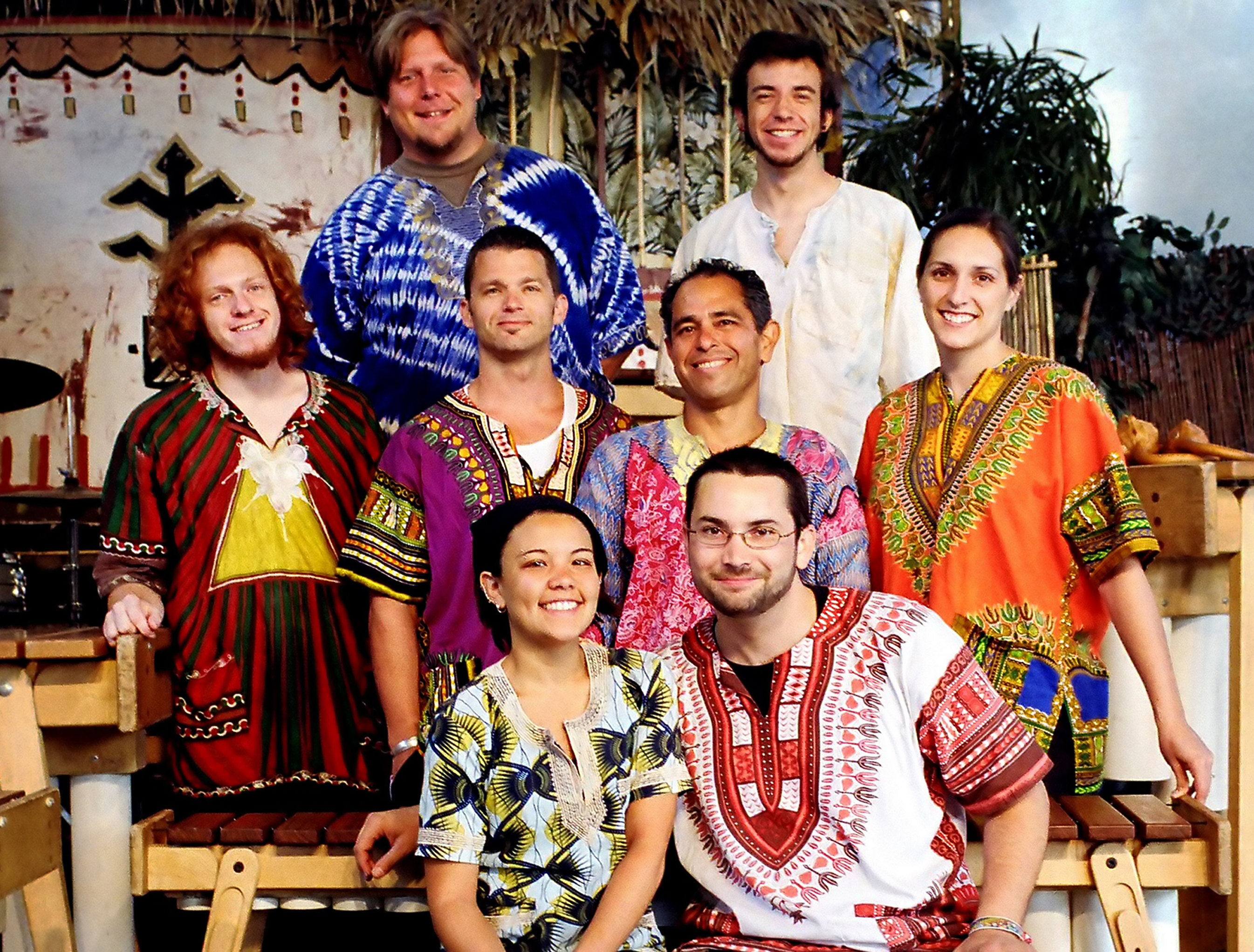*Masanga Marimba Ensemble to bring sounds of Africa to campus in celebration of ethnomusicology department*

Masanga Marimba Ensemble, a musical group that plays mostly traditional music from both Latin America and Africa, will be performing Friday at noon in Bruin Plaza. The performance is a part of the 50th anniversary celebration of the ethnomusicology department at UCLA and features seven Zimbabwean marimbas.
Courtesy of LISA RICHARDSON
Masanga Marimba Ensemble
Friday, noon
Bruin Plaza
By Elia Rogers
April 6, 2011 1:46 a.m.
When ethnomusicology alumnus Ric Alviso was first assigned the task of teaching his African music ensemble class the marimba, he only had a few weeks to learn the instrument before he taught the class.
A decade later, Alviso now leads the only Latin American- and African-influenced marimba ensemble in Southern California, Masanga Marimba Ensemble. The group will play its rhythmic music Friday at noon in Bruin Plaza.
This performance is part of the yearlong celebration of 50 years of ethnomusicology at UCLA. The ethnomusicology department will host the celebration, which began last spring and which will feature the ensemble members playing seven Zimbabwean marimbas, percussion, saxophone and trumpet.
Alviso said that the focus of the ensemble’s music is marimba playing, although the group occasionally features other instruments. The marimba is a musical instrument that originated in Africa and later made its way to Central and South America. Sound is produced by striking wooden bars, placed above resonators, with mallets.
“The music is mostly traditional. We may throw in a few things from Latin America to show the connection between African marimbas and Latin American marimbas. Those are songs that people would probably recognize like “˜La Bamba,’ “˜Guantanamera’ and “˜Waka Waka,'” Alviso said.
After seeing the Masanga Marimba Ensemble perform at the Society for Ethnomusicology’s conference in Los Angeles, Donna Armstrong, assistant to the ethnomusicology chair, said she enjoyed the upbeat music and thinks others on campus will too. According to Armstrong, the ensemble engages its audience with its upbeat music.
“The whole crowd couldn’t help but dance. It was a very danceable rhythm, and their music was very tight,” Armstrong said.
Alviso’s love of African music began when he spent two years researching music in Senegal and Zimbabwe. His time in Africa, combined with his experience with Latin American music and his Latin American heritage, are the sources of inspiration for the fusion of the two musical worlds.
Alviso said the ensemble’s name describes the ensemble’s intention to bring the Latin American and African worlds together. According to Alviso, the word “masanga” is a Shona word that means “a coming together of roads or rivers.”
The ensemble started in 2000 as part of a class Alviso teaches at California State University, Northridge, and it is the same class that Alviso quickly learned the marimba for. The group is comprised of Alviso’s former students who have taken the class.
Since its conception, Masanga Marimba Ensemble has seen several changes to its lineup, although the group still has three of its original students. Its newest member, Alex Smith, joined roughly two years ago and said that since he began playing the marimba he has grown tremendously as a musician.
“I became more aware of African music, Soukous style and drum beats,” Smith said. “It has made me do research and homework and study new percussion instruments. It’s definitely widened my palate and increased my skill set on the drums.”
Smith, a classically trained percussionist, said the transition from percussion to marimba was somewhat difficult, but he found that the similarity between how the two are played eased the transition.
Every member of the group is classically trained in an instrument other than marimba. According to Alviso, this allows the ensemble to draw from other instruments to build on their music.
Smith and Alviso both said they hope the audience will walk away with a healthy interest and desire to learn more about marimba music, but each hopes for a little more than just that. Alviso said he hopes that the music will generate an interest among students for the people of Zimbabwe and the many problems they must face every day: economic issues, political turmoil and the ongoing AIDS epidemic.
“I hope that students take an interest in Zimbabwe and what’s going on in Zimbabwe and are aware that the country has a lot of problems. Perhaps they can get involved somehow with an organization that is trying to make a difference,” Alviso said.
Smith aims for something much simpler for people who see the performance.
“I want them to have a good time and bring a little bit of happiness to their day,” Smith said.

